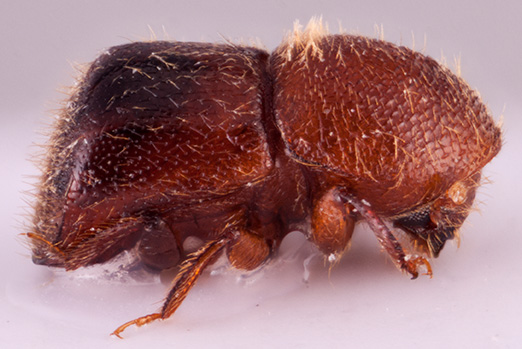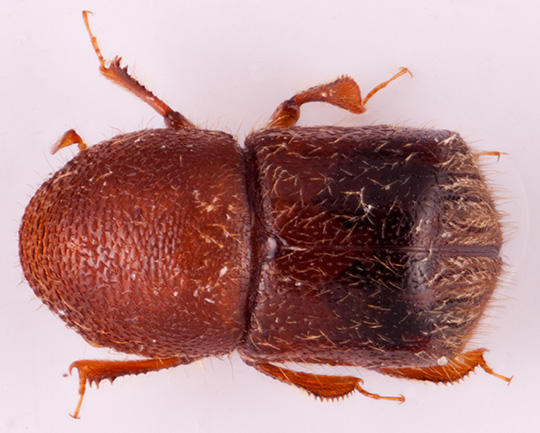Xylosandrus beesoni
|
Xylosandrus beesoni lateral; R.K. Osborn |
|
Xylosandrus beesoni dorsal; R.K. Osborn |
|
Xylosandrus beesoni declivity; R.K. Osborn |
|
Xylosandrus beesoni frontal; R.K. Osborn |
Taxonomic history
Xylosandrus beesoni Saha, Maiti, and Chakraborti, 1992: 11.
Diagnosis
2.2−2.7 mm long (mean = 2.43 mm; n = 4); 2.0−2.25 times as long as wide. This species can be distinguished by its moderate size; elytralelytral:
'pertaining to the elytra
discdisc:
the flat central upper surface of any body part (e.g. pronotum and elytra) flat, longer than declivitydeclivity:
flat, longer than declivitydeclivity:
downward slope of either the pronotum or elytra
 ; declivitaldeclivital:
; declivitaldeclivital:
pertaining to the elytral declivity
face steep, abruptly separated from discdisc:
the flat central upper surface of any body part (e.g. pronotum and elytra) ; elytraelytron:
; elytraelytron:
'
the two sclerotized forewings of beetles that protect and cover the flight wings
appearing obliquely truncateobliquely truncate:
'nearly truncate but rounded not flat in lateral view
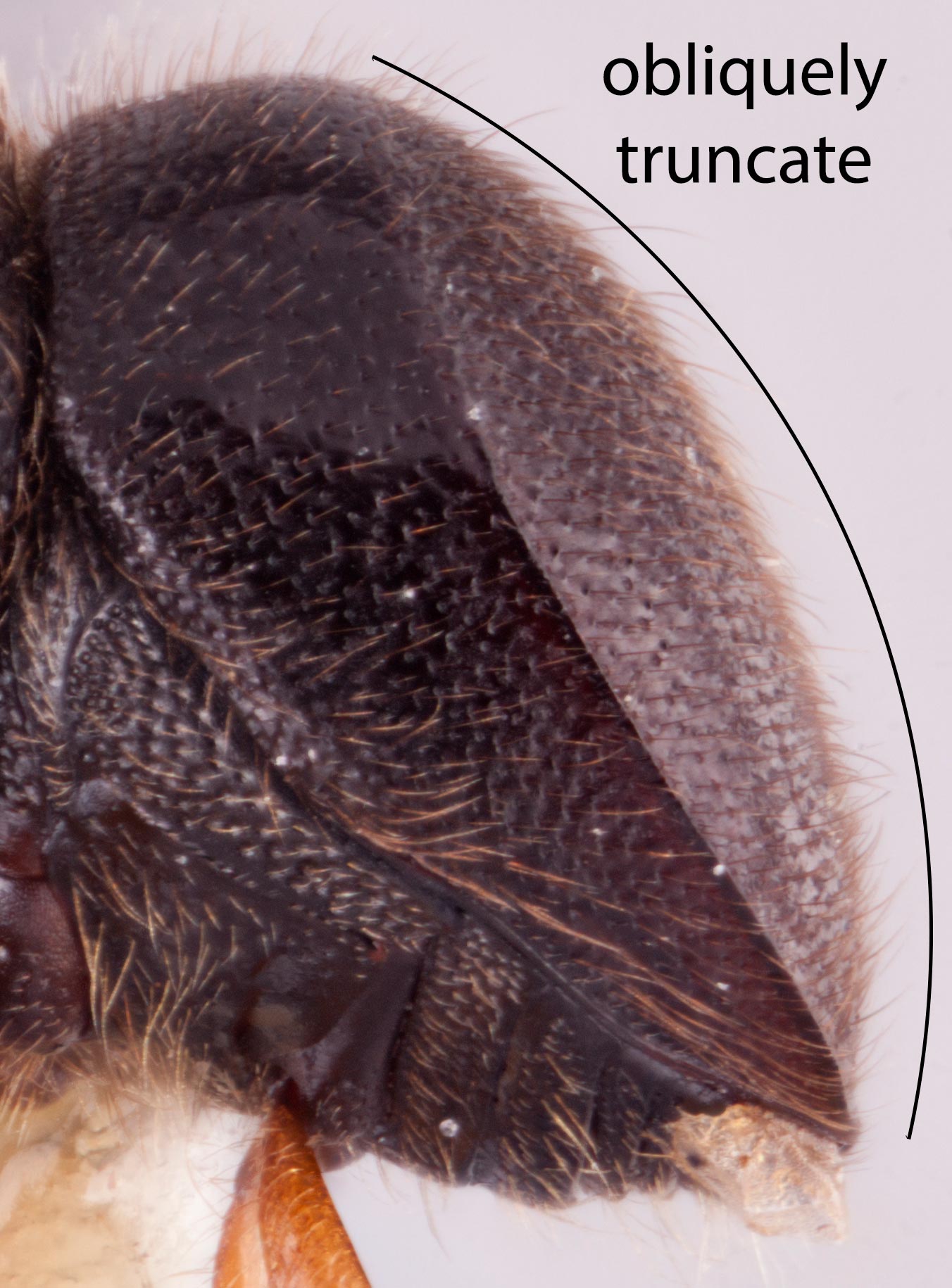 ; posterolateralposterolateral:
; posterolateralposterolateral:
'relating to end of the side part/portion
 margins of elytraelytron:
margins of elytraelytron:
'
the two sclerotized forewings of beetles that protect and cover the flight wings
carinate to interstriaeinterstria:
'longitudinal spaces along the elytra between the striae, which is not as<br />
impressed and bear smaller punctures.
 7; declivitaldeclivital:
7; declivitaldeclivital:
pertaining to the elytral declivity
face with four apparent granulategranulate:
'pertaining to a coarse, grainy surface texture'
 striae (striae 5 short, converging with striaestria:
striae (striae 5 short, converging with striaestria:
punctures in rows, which may or may not be impressed to make grooves 4 forming a loop); declivitaldeclivital:
4 forming a loop); declivitaldeclivital:
pertaining to the elytral declivity
face convexconvex:
appearing rounded , striaestria:
, striaestria:
punctures in rows, which may or may not be impressed to make grooves setose, setaeseta:
setose, setaeseta:
small hair-like or scale-like structure
semi-recumbentsemi-recumbent:
pertaining to setae that are in between'erect and recumbent, usually at a 45 degree angle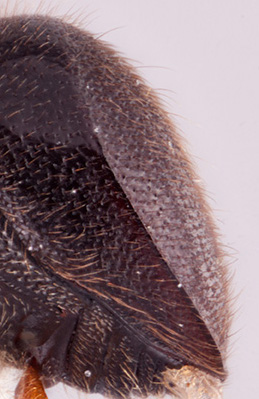 hairs and less than the width of an interstriainterstria:
hairs and less than the width of an interstriainterstria:
'longitudinal spaces along the elytra between the striae, which is not as<br />
impressed and bear smaller punctures.
 ; interstriaeinterstria:
; interstriaeinterstria:
'longitudinal spaces along the elytra between the striae, which is not as<br />
impressed and bear smaller punctures.
 granulategranulate:
granulategranulate:
'pertaining to a coarse, grainy surface texture'
 , granulesgranule:
, granulesgranule:
'a small rounded protuberance, like grains of sand
 multiseriate, confusedconfused:
multiseriate, confusedconfused:
of markings, having indefinite outlines or running together as lines or spots without definite pattern; usually referring to punctures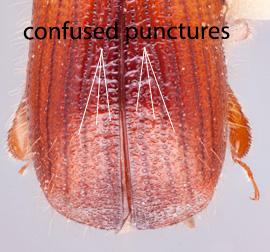 with a uniseriate row of erecterect:
with a uniseriate row of erecterect:
'pertaining to setae that have their apices directed away from the body and appear straight
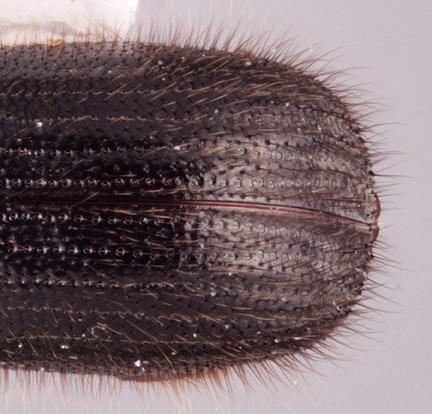 hair-like setaeseta:
hair-like setaeseta:
small hair-like or scale-like structure
longer than the width of 1.5 interstriaeinterstria:
'longitudinal spaces along the elytra between the striae, which is not as<br />
impressed and bear smaller punctures.
 and confusedconfused:
and confusedconfused:
of markings, having indefinite outlines or running together as lines or spots without definite pattern; usually referring to punctures semi-erect hairs equal to the width of an interstriainterstria:
semi-erect hairs equal to the width of an interstriainterstria:
'longitudinal spaces along the elytra between the striae, which is not as<br />
impressed and bear smaller punctures.
 ; strial granulesgranule:
; strial granulesgranule:
'a small rounded protuberance, like grains of sand
 two times larger than those of interstriae; pronotumpronotum:
two times larger than those of interstriae; pronotumpronotum:
'the dorsal surface of the thorax
longer than wide, from dorsaldorsal:
'of or relating to the upper surface; opposite of ventral
 view conical frontally (type 6) and laterallateral:
view conical frontally (type 6) and laterallateral:
'pertaining to the side
 view taller (type 2), summitsummit:
view taller (type 2), summitsummit:
highest point, used for pronotum and elytra, denotes the peak between pronotal frontal slope and disc, and between elytral disc and declivity at basalbase:
at basalbase:
point or edge closest to the body; opposite of apex quarter, basalbase:
quarter, basalbase:
point or edge closest to the body; opposite of apex quarter shagreenedshagreened:
quarter shagreenedshagreened:
covered with a closely-set roughness, like shark skin'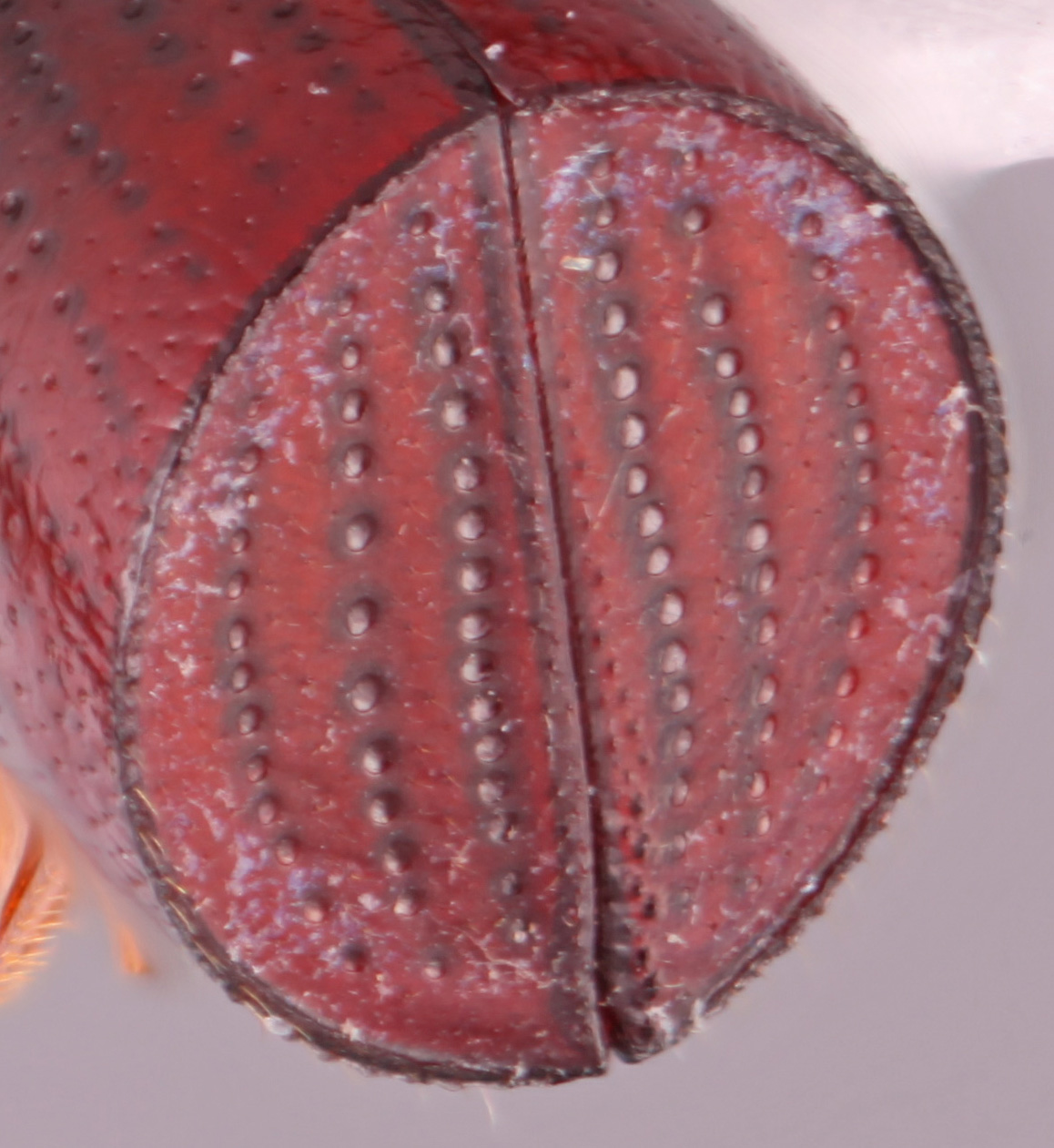 , dull, densely punctatepunctate:
, dull, densely punctatepunctate:
'set with fine impressed points, appearing as pin pricks
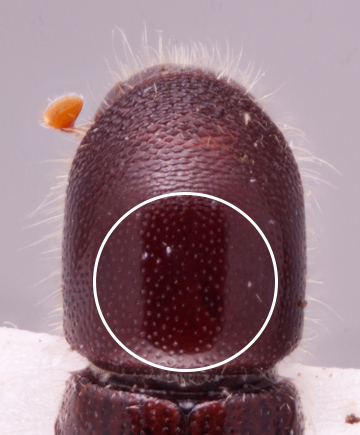 ; and broad, dense mycangial tuftmycangial tuft:
; and broad, dense mycangial tuftmycangial tuft:
'tuft of setae that denotes the mycangia exterior opening
 on the pronotalpronotal:
on the pronotalpronotal:
'pertaining to the pronotum
basebase:
point or edge closest to the body; opposite of apex .
.
May be confused with
Xylosandrus borealis, X. discolor, X. diversepilosus, X. jaintianus, and X. subsimiliformis
Distribution
India (Arunachal Pradesh, West Bengal), Thailand, Vietnam
Host plants
recorded only from Symplocos (Symplocaceae) (Maiti and Saha 2004Maiti and Saha 2004:
Maiti PK, Saha N. 2004. Fauna of India and the adjacent countries. Scolytidae: Coleoptera (bark and ambrosia beetles). Vol. 1. Part 1. Zoological Survey of India, Kolkata, 268 pp.)
Remarks
This species was collected in great abundance by SMS and AIC in Lao Cai province, Vietnam. In nearly all collecting events the species was found in small branches (1−5 cm) in diameter that were dry and often exposed to full sun, an unusual feeding habit, as most other xyleborines are unable to thrive under these conditions. Thai specimens were recorded as Xylosandrus subsimiliformis by Dole and Cognato (2010) and Beaver et al. (2014).
DNA data
Sequences available for COI and CAD.

